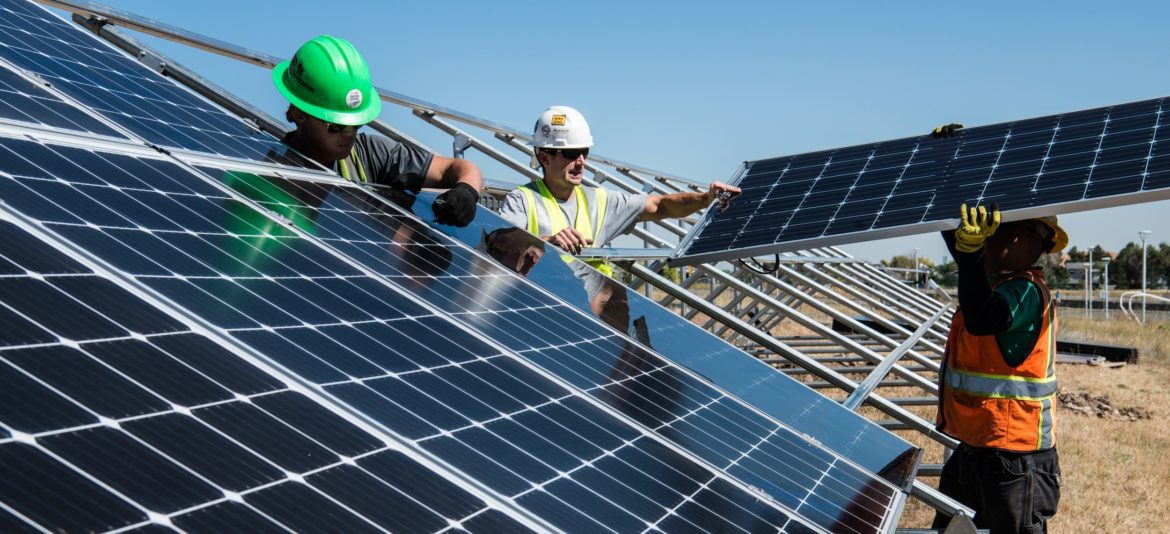Energy, AFFORDABLE PLACE TO LIVE
NJ.com: Just how expensive is renewable energy? Can we afford it?

By Regina M. Egea
Would you sign a lease for an apartment without knowing the monthly rent? As Garden State Initiative documents in our new report New Jersey’s Energy Future: At What Cost to You?, that’s essentially what’s happening to every New Jerseyan through our state’s Energy Master Plan (EMP).
New Jerseyans have rightfully viewed coastal resiliency as a priority since 2012 when Superstorm Sandy triggered massive coastal flooding, damaged or destroyed 346,000 homes and caused $30 billion in economic losses.
This threat of serious climate change in New Jersey is real and explains why our nearly 9.3 million residents support progress against climate change, including the growth of renewable energy sources such as wind and solar.
In January 2020, like every governor before him since 1977, Gov. Phil Murphy delivered an Energy Master Plan (EMP). This strategic vision for the state’s energy future is the most ambitious yet, striving to manage carbon emissions, rising sea levels along the Jersey coast and other climate change impacts to health, by phasing out natural gas and other traditional energy sources and relying on offshore wind and solar power.
The objective: Make the state 50% carbon neutral by 2030 and 100% by 2050 while generating the electricity New Jersey requires for its homes, business and industry, and all of its vehicles.
Unfortunately, the administration has communicated little to answer the uppermost question on all New Jerseyan’s minds: How will my monthly utility bill be impacted? Incredibly, the EMP did not include a cost analysis. An outside consultant was only recently retained but will require 18 months — until December 2022 — to complete the analysis. Until then, New Jerseyans will be in the dark about how high their electric bills will climb.
Undaunted, spending billions implementing this plan continues. This cart-before-the-horse approach alone should give all residents pause. The importance of this risk cannot be overstated.
Already, the state’s residential electricity rate is the third highest versus five neighboring states and the 10th highest nationwide. The rate New Jersey businesses pay is second highest among nearby states and ninth highest nationwide.
This administration’s EMP calls for natural gas and nuclear power, which today generates 93% of the state’s electricity at a cost of approximately $37 per megawatt hour (MWh), to be reduced by nearly half to 50%. In contrast, wind and solar today account for just 5.3% and are expected to grow to 50% by the end of this decade at a cost of $120.52 per MWh in 2026 for the offshore-wind facilities New Jersey is banking on. This dramatic shift in increasing the mix of much higher cost energy sources cannot avoid exponential increases to every New Jerseyan’s monthly utility bill.
As early evidence, and contrary to industry trends, New Jersey’s residential electricity rates climbed 4.6% last year — the largest rise among nearby states (rates in four of the six states actually fell) and translated into a $145.13 electric bill for New Jersey or over 30% higher versus the U.S. average of $108.63.
Other states who are lurching ahead with early-stage renewables have had revealing experiences for their residents. In California, with wind and solar contributing just 29% of its electric power, the monthly cost is $192.23, or almost double the U.S. average. The cost of $209.99 in Rhode Island, where wind accounts for only 18% and solar 6.3% of the power generated, is more than double the U.S. average. And Rhode Islanders will pay $11 to $14 a month more for their electric bill in scenarios projecting 100% use of solar or wind power, a report by the state’s Office of Energy Resources concluded this year.
All too often, when energy policy is concerned, policymakers and lawmakers ignore the question of cost and the public is either too overwhelmed with the technical issues or too trusting of lawmakers to protect their interests. Left to their own devices, lawmakers and regulators will opt instead for idealistic plans with nearly impossible goals that don’t reflect the impact on lower-income households and retirees on fixed incomes. As for our state’s EMP, it must strike a balance between moving to total renewable energy sources for sustainability’s sake, with consideration of the economic burdens that New Jerseyans already bear.
This real representation of the plan’s huge, anticipated costs and impacts is what’s missing. Residents and businesses deserve to know the EMP’s expected price tag and how much they must provide. For that reason, any action on the plan’s major elements must be delayed until, at the very least, the cost analysis is finished at the end of 2022. The stakes are simply too high to do otherwise.
Regina M. Egea is president of the Garden State Initiative, an independent research and educational organization dedicated to promoting new investment, innovation and economic growth in New Jersey.
